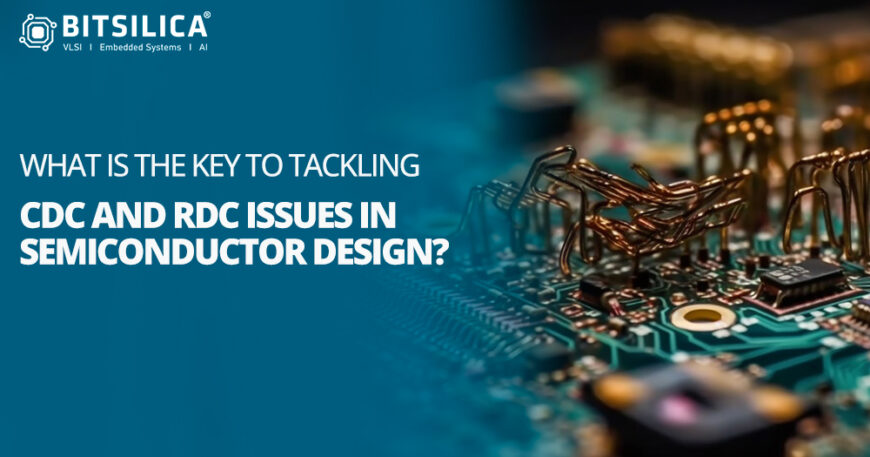What is the Key to Tackling CDC and RDC Issues in Semiconductor Design?
Semiconductor design engineers face various challenges where every detail matters for optimal performance. Clock Domain Crossing (CDC) and Rest Domain Crossing (RDC) present significant obstacles, urging engineers to find inventive solutions and meticulous approaches.
Understanding the Challenges of Clock Domain Crossing (CDC) :
Within complex digital architectures, diverse blocks or modules frequently operate at distinct clock frequencies or asynchronously. As signals transition across these separate clock domains, they confront obstacles such as metastability, data loss, and timing violations.
Effectively managing CDC is essential to uphold the reliability and performance expectations of digital systems, spotlighting its critical position as a primary concern for engineers entrenched in semiconductor design.
Clock Domain Crossing (CDC) Issues:
Here’s a closer look at the critical issues associated with CDC:
Understanding Rest Domain Crossing (RDC) in Semiconductor Power Management:
Rest Domain Crossing (RDC) is critical in semiconductor design, particularly in power management systems. As devices increasingly incorporate low-power modes to conserve energy, transitioning between active and rest domains becomes paramount.
RDC encompasses the challenges of maintaining data integrity during these transitions, ensuring critical information is preserved when components enter low-power states and accurately restored when needed.
Effective management of RDC is essential for optimizing power efficiency and ensuring seamless system functionality, making it a key focus area for semiconductor engineer
Rest Domain Crossing (RDC) Issues:
Here are the focal points of RDC issues:
Power Gating: Transitioning signals between powered and unpowered domains introduces complexities in maintaining data integrity during power state changes, which is essential for energy conservation.Retention Registers: Retention registers store critical state information during lowpower states, necessitating careful management to ensure accurate data capture and restoration when required.
Wake-Up Events: Signals from rest domains must effectively activate components or modules in active domains. Synchronization between domains is paramount to ensure seamless system functionality.
Clock Gating: Clock gating halts clock signals to inactive modules to conserve power. Synchronizing signals between clock-gated and active domains is vital to prevent timing violations and data corruption.
Dynamic Voltage and Frequency Scaling (DVFS): DVFS techniques adjust voltage and frequency based on workload, requiring meticulous consideration when crossing signals between domains operating at different levels.
How can engineers ensure accurate data capture and restoration during low-power states?
To ensure accurate data capture and restoration during low-power states, consider the following additional strategies:
Retention Registers: Use retention registers to store critical data before powering down, ensuring it’s preserved.
Synchronized Control Signals: Coordinate power gating with data capture/restoration to maintain synchronization.
Strict Timing Constraints: Enforce precise timing for data operations to avoid transition errors.
Clock and Reset Management: Manage clocks and resets to align with data operations and minimize timing issues.
Error Detection/Correction: Implement mechanisms to detect and correct data errors during transitions.
Thorough Verification: Validate data handling processes through rigorous testing and simulation.
Clear Power Management Policies: Define policies for data handling during low-power transitions to ensure consistency and reliability.
Conclusion
In the complex landscape of semiconductor design, CDC and RDC issues are pivotal areas requiring meticulous attention. Practical analysis, innovative design techniques, and robust synchronization methods are essential for tackling these challenges.
By navigating the complexities of CDC and RDC, engineers uphold the reliability, performance, and power efficiency of complex digital systems, propelling innovation in the semiconductor industry.





